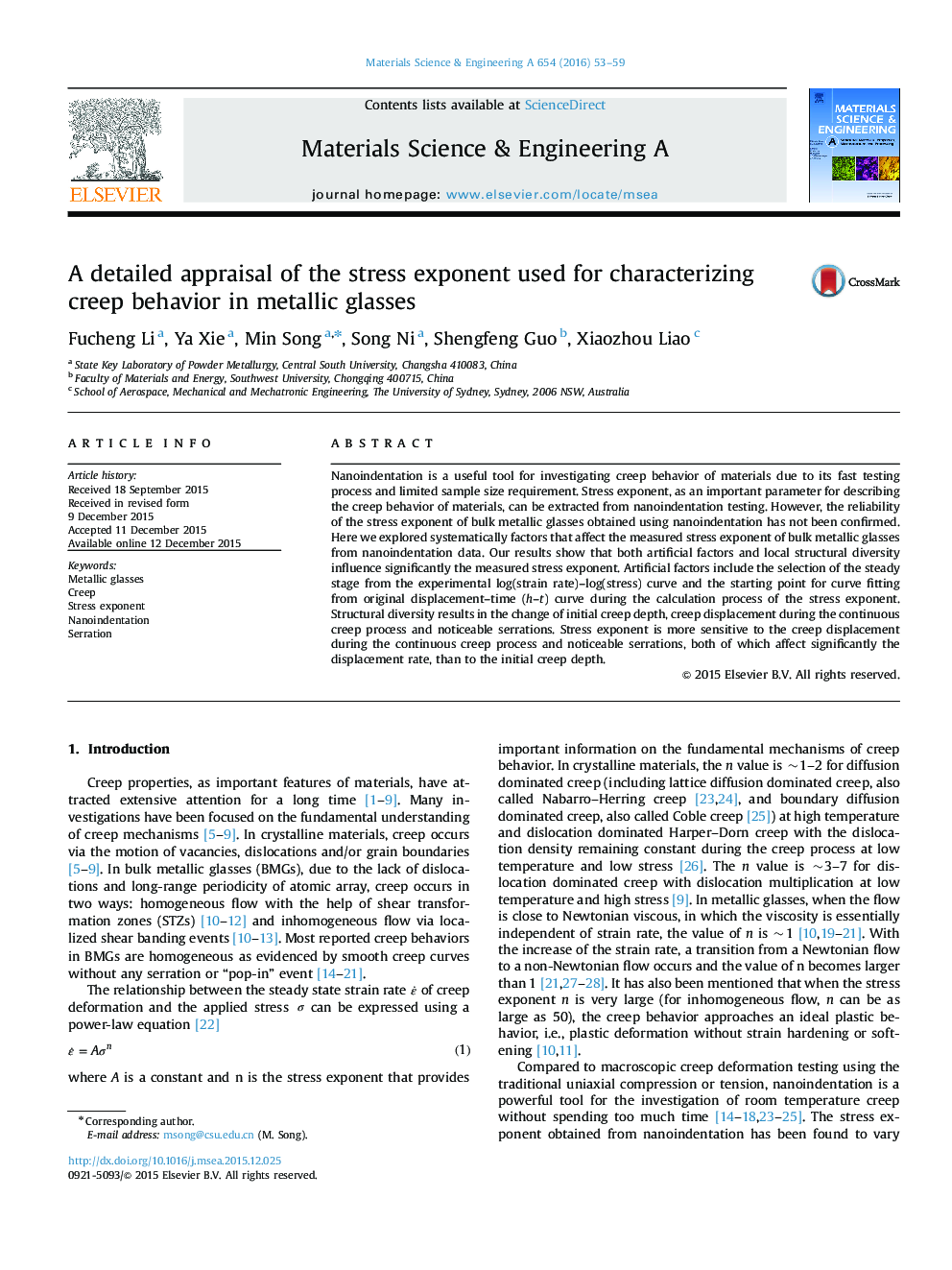| Article ID | Journal | Published Year | Pages | File Type |
|---|---|---|---|---|
| 7975542 | Materials Science and Engineering: A | 2016 | 7 Pages |
Abstract
Nanoindentation is a useful tool for investigating creep behavior of materials due to its fast testing process and limited sample size requirement. Stress exponent, as an important parameter for describing the creep behavior of materials, can be extracted from nanoindentation testing. However, the reliability of the stress exponent of bulk metallic glasses obtained using nanoindentation has not been confirmed. Here we explored systematically factors that affect the measured stress exponent of bulk metallic glasses from nanoindentation data. Our results show that both artificial factors and local structural diversity influence significantly the measured stress exponent. Artificial factors include the selection of the steady stage from the experimental log(strain rate)-log(stress) curve and the starting point for curve fitting from original displacement-time (h-t) curve during the calculation process of the stress exponent. Structural diversity results in the change of initial creep depth, creep displacement during the continuous creep process and noticeable serrations. Stress exponent is more sensitive to the creep displacement during the continuous creep process and noticeable serrations, both of which affect significantly the displacement rate, than to the initial creep depth.
Related Topics
Physical Sciences and Engineering
Materials Science
Materials Science (General)
Authors
Fucheng Li, Ya Xie, Min Song, Song Ni, Shengfeng Guo, Xiaozhou Liao,
